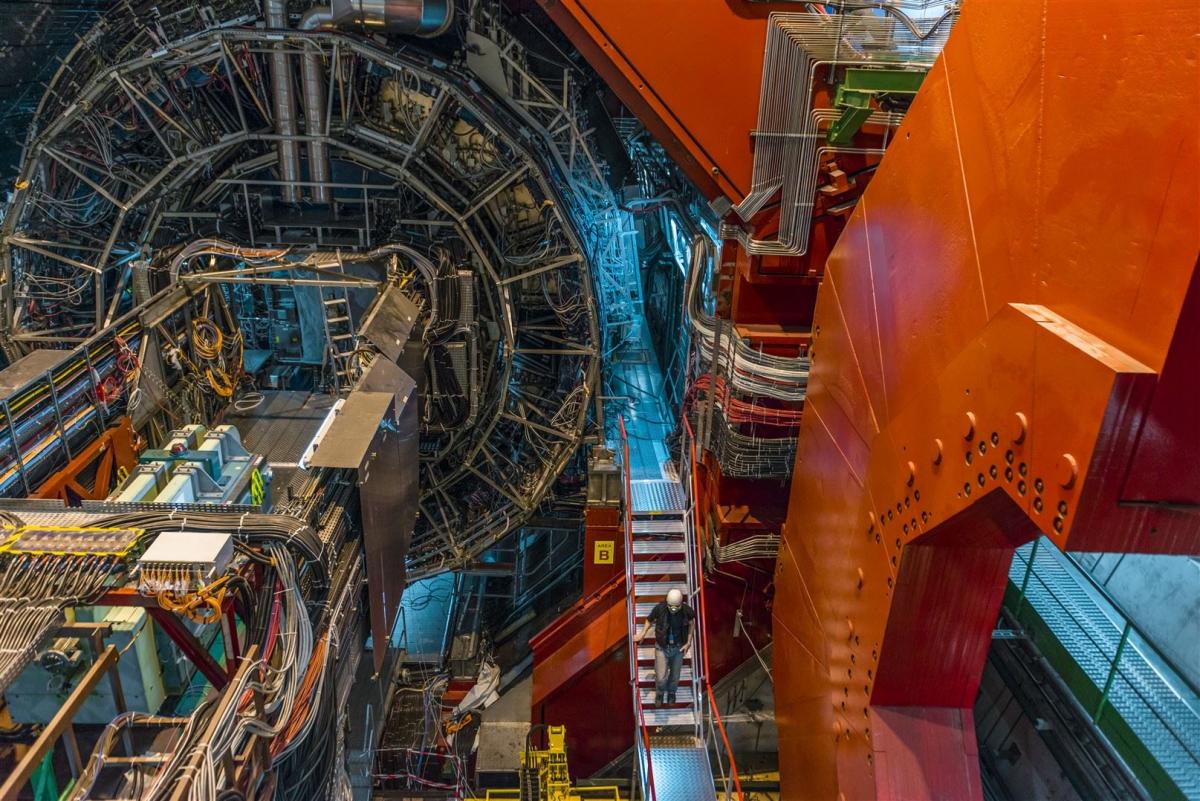ALICE upgrade plans
The ALICE experiment prepares upgrades of several subsystems and the online–offline system for data acquisition and processing during the Long Shutdown 2 (LS2) of the Large Hadron Collider (LHC). This will enable the experiment to do high precision measurements of rare probes from high to very low transverse momentum while also searching for new phenomena in QCD. Two of the key drivers for this upgrade are the high-precision measurements of charm and beauty production in heavy-ion collisions as well as the high-luminosity phase of the LHC (L = 6 ⇥ 10^27 cm2s1) for Pb-Pb.
Excellent tracking efficiency and track resolution down at low transverse momentum and gaining a factor 100 in statistics will boost ALICE’s physics programme. In addition, many of the proposed physics topics (heavy flavours, low-mass dileptons, heavy nuclear states) rely on the inspection of high event statistics, without a dedicated trigger. ALICE will be able to inspect practically all heavy-ion collisions.

(Image credits: ALICE Experiment)
The large increase in statistics will be achieved by reading out Pb-Pb interactions at maximum rate of 50 kHz with the goal of integrating a luminosity of ≥13 nb−1 after LS2. Moreover, ALICE upgrade will help to improve vertexing and tracking capabilities. This implies building a new Inner Tracking System (ITS), a major upgrade of the TPC detector and a modification of the readout electronics of other detectors to comply with the high readout rate. It implies also a major upgrade of the online and offline systems.
The upgrade of the ALICE ITS will provide excellent tracking capabilities, significantly improve the impact parameter resolution and read out Pb-Pb events at 50 kHz interaction rate. The new, 10 m2 large silicon detector is entirely based on seven layers of monolithic silicon pixel detectors, based on a 50 μm thick CMOS pixel sensor, and will help to extend the physics reach to new observables and improve the accuracy of existing ones.
The improved impact parameter resolution is achieved by moving the innermost layer (layer 0) closer to the interaction point to 23 mm radius, reducing the beam pipe radius from 29 mm to 18.2 mm, reducing the material budget of the innermost layers by almost a factor 3 to 0.3% X0 and by reducing the pixel size from presently 50 μm × 425 μm to pixel sizes in the order of 30 μm side length.
Another major upgrade concerns the ALICE Time Projection Chamber. During this winter shutdown period, a delicate intervention has been performed on the TPC in preparation for the Run3 of LHC; endoscopic “cleaning” that will make the TPC more efficient and afford higher collision rates. Furthermore, Operating the TPC at a collision rate of 50 kHz requires to overcome the current limitations imposed by the operation of the gating grid and opt for continuous read out. The present multi-wire proportional chambers (MWPC) based readout chambers will be replaced by GEM detectors which feature intrinsic ion blocking without additional gating and exhibit excellent rate capabilities. The technical implementation of the GEM based upgrade of the ALICE TPC will benefit from new technologies presently being developed for other large upgrade projects like the CMS forward muon system The TPC upgrade also calls for replacing the existing frontend electronics to accommodate for the inverted signal polarity and to provide the full flexibility of a continuous readout.
The current TOF readout can sustain readout rates of tens of kHz so the ALICE upgrade program foresees an upgrade of the TOF readout electronics to further increase the readout rate capability for both Pb-Pb and pp interactions. Similarly, an upgrade of the TRD readout is planned to cope with the new interaction rates. The TRD has originally been designed to cope with a Pb–Pb interaction rate of 10 kHz and a maximum track multiplicity of 8000 charged particles per rapidity unit, which is four times larger than that actually observed. The performance of the TRD readout chain and its potential upgrade depends on two major functional units, the Front-End Electronics (FEE) and the Global Tracking Unit (GTU).
The upgraded ALICE detector will produce more than 1 TByte/s of data. Both collision and data rate impose new challenges on the computing system and software framework. Building on the experience accumulated during the design and operation of the online and offline systems during Run 1 and Run 2, the O2 software framework will implement a distributed, parallel and staged data processing model. The new ALICE Computing Model is designed for a maximal reduction of the data volume read out from the detector as early as possible during the data-flow. It is designed from the start to combine all the computing functionalities needed in a HEP experiment: detector read-out, event building, data recording, detector calibration, data reconstruction, physics simulation and analysis
Finally, the ALICE upgrade programme explores the possibility of upgrade the muon tracking system, including its electronics, as this will offer new possibilities for studying strange and charm quarks production in heavy-ion collisions.
For a full discussion of the ALICE upgrade programme you can read the LoI.
